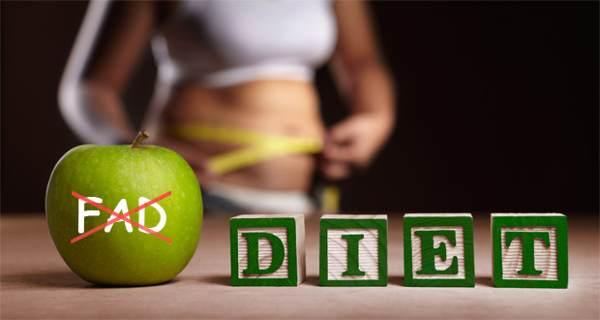More Food, Less You
If you want to lose weight, you need to eat less food, right? Wrong. When you cut back on the amount of food you eat, you may actually stimulate your appetite, causing you to eat more than usual rather than less. Obviously, this makes losing weight difficult if not impossible. So how is it possible to lose weight without eating less food? The answer is to eat fewer calories, not less food, and this article shows you how.
Calories
No matter what their claims, all weight-loss diets are based on eating fewer calories than your body needs to maintain its weight. It is impossible to lose weight without eating fewer calories. While exercise is effective at helping to maintain any weight loss achieved through diet, it takes an enormous amount of exercise to burn enough calories to lose even one pound. Eating fewer calories, however, is doable.
So what exactly are calories and where do they come from? The technical definition of a calorie is the amount of energy it takes to raise one gram of water one degree Celsius. In more practical terms, calories from food are what give your body energy. In fact, you may hear the calories in food referred to as the energy in the food.
In addition to calories, your body needs certain essential nutrients to function well. There are six essential nutrients: protein, carbohydrate, fat, vitamins, minerals, and water. Only protein, carbohydrate, and fat provide calories. Vitamins, minerals, and water provide no calories, but they assist your body in processing the calories you consume. The purpose of eating a balanced diet that includes foods from each food group (vegetables; fruits; dairy products; meat, fish, poultry, and other high-protein foods; grains; and fats) is to get enough of all of the nutrients you need every day.
Although protein, carbohydrate, and fat all provide calories, they don’t all provide the same number of calories. There are 4 calories in one gram of protein, 4 calories in one gram of carbohydrate, and 9 calories in one gram of fat. This explains why high-fat foods are also high-calorie foods.
Most packaged foods list the total number of calories per serving, but if you didn’t know the total number of calories, you could calculate it if you knew the number of grams of protein, carbohydrate, and fat.
Weight gain or loss
Your body needs a certain number of calories every day, whether or not you perform any physical movement. That’s because your heart, brain, lungs, and other organs are at work all day long, and they require calories to function. Researchers have come up with a number of equations to figure out how many calories are needed simply to maintain basic bodily functions. This is sometimes called the basal metabolic rate (BMR). The following are called the Mifflin—St. Jeor equations:
- For men, BMR = 10 x weight + 6.25 x height — 5 x age + 5
- For women, BMR = 10 x weight + 6.25 x height — 5 x age — 161
These equations require your weight in kilograms, height in centimeters, and age in years. To calculate your weight in kilograms, divide your weight in pounds by 2.2. To calculate your height in centimeters, multiply your height in inches by 2.54.
Your calorie needs also depend on how active you are. To determine your total daily calorie needs, multiply your BMR by one of the following numbers, according to your usual activity level:
- Sedentary: 1.3
- Lightly active (walking or standing but no formal exercise): 1.4
- Moderately active (some exercise): 1.5
- Very active (walking and exercise): 1.6
- Extra active (very hard daily exercise or sports, a physically active job, or training two times a day): 1.8
Once you know what you need to eat to maintain your weight, you can determine what you need to do to gain or lose weight. Whenever you exceed your maintenance needs by 3,500 calories, you gain one pound; when you consume 3,500 fewer calories than you need for weight maintenance, you lose one pound.
If you need 2,000 calories a day to maintain your current weight and you eat 2,500 calories a day for a week, you will gain a pound in that week. Similarly, if you need 2,000 calories a day but consistently consume 2,100 calories a day, you will gain a pound every 35 days. As long as you exceed your needs and consume extra calories, you will gain one pound once you hit the 3,500 additional calories.
To lose one pound of weight, you must consume 3,500 calories less than you need to maintain your weight, but don’t try to do this in one or two days. The guidelines of most major health organizations are to lose one to two pounds per week so that you lose fat and not just muscle. To lose one pound in a week, you would need to consume 500 calories fewer than normal each day for seven days, giving you a cumulative deficit of 3,500 calories (500 x 7 = 3,500). To lose two pounds a week, you would need to cut out 1,000 calories per day, giving you a deficit of 7,000 calories (1,000 x 7 = 7,000). If your maintenance calories were 2,000 per day and you ate 1,500 per day for seven days, you would lose one pound. If your maintenance calories remained the same and you ate 1,000 calories per day, you would lose 2 pounds.
As you lose weight, you need fewer calories to maintain your weight. While there are no firm guidelines on how often to recalculate your BMR, a rule of thumb is to recalculate if you have been at a weight-loss plateau for two to three weeks in spite of being consistent with your eating and activity.
Energy density
If weight loss can be boiled down to a simple math calculation, why is 65% of the US population overweight? Because it’s actually not that simple, as anyone who has tried to lose weight already knows. Successful, long-term weight loss and maintenance requires making changes in your diet, your behavior, and your level of physical activity. However, it doesn’t require eating less food.
How it is that possible? It all starts with something called energy density. Energy density is the amount of calories in a fixed weight of food. A food with high energy density has a lot of calories in a small amount of food. Foods with very low or low energy density have a small amount of calories in a large amount of food.
The calculation to determine the energy density of food is calories ÷ grams. For example, look at the food label for butter . To determine the energy density of butter, divide 102 calories per serving by 15 grams to get an energy density of 6.8, making butter a very energy-dense food. As seen in the “Energy Density of Foods” table, foods can be categorized according to their energy density.
What affects the energy density of foods the most is water content. Water has an energy density of 0, so it makes sense that it lowers the energy density of food. Foods that contain a lot of water include vegetables, fruits, low-fat dairy products, and soups. If you remove the water from fruit, the energy density increases. Raisins, for example, provide 100 calories per 1/4 cup, while grapes, which are essentially raisins plus water, provide 100 calories in nearly 2 cups.
Food weight
The more energy-dense foods you eat, the more calories you will take in, so it would seem logical to just eat smaller portions. But as many people have no doubt found, if you’re accustomed to eating 2 cups of grapes, 1/4 cup of raisins isn’t as satisfying.
That’s where food weight comes in. Research has shown that people eat a consistent weight of food on a daily basis. The weight varies from person to person, but if you weighed all of the food you ate every day for a month, you would see a consistent trend in the total weight of food eaten each day. It’s almost as if there’s a scale in your stomach that is set to a certain number, and every day you eat enough food to reach that number.
The fact that the body wants the same amount or weight of food every day is what makes it possible to eat more while taking in fewer calories. This was illustrated in a study published in The American Journal of Clinical Nutrition in 1998. In the study, 18 women attended three separate test sessions at which they were provided with two meals. The only difference between the sessions was the energy density of the food that was provided. One session had food with low energy density, one had food with medium energy density, and one had food with high energy density. The participants ate the same weight of food at each session, regardless of the food’s energy density. However, because foods with a higher energy density have more calories for a given weight, the participants consumed more calories when they ate the foods with higher energy density and fewer calories when they ate the foods with lower energy density.
This study and others have shown that foods with low energy density help to promote a feeling of fullness, decrease hunger, and lower calorie intake, all of which can lead to weight loss. In addition, long-term studies have shown that people consuming diets with low energy density lose three times as much weight as others in the same time period. The data supporting the weight-loss benefits of diets with low energy density are so compelling that the World Health Organization has declared that “decreasing energy density is a viable strategy to stem the global obesity epidemic.”
Changing your food choices
How can you use this information to help you achieve your weight-loss goals? Start by choosing more foods that are low in energy density. Look for creative ways to add foods that are high in water to your diet. For example, consider starting your meals with soup or a salad. In a recent study, having soup or a salad with low energy density as the first course of a meal was compared to having a first course with a high energy density or no first course. The results clearly showed that eating soup or a salad first reduced the total number of calories eaten at the meal. Having the high energy density appetizer increased the calorie total of the meal.
When you eat soup, be sure it’s broth-based soup, and when you eat salad, limit the amount of high-fat dressing you use to keep your calories low. Some other ways to increase your food volume and decrease your calories are to include more beans, whole grains, vegetables, fruit, hot cereals, and yogurt in your diet.
The only way to know exactly how many calories you are eating is to calculate them. But because low energy density foods are low in calories, you may be able to decrease your calorie intake and lose weight without having to count.
The good news here is that you can eat more and weigh less. Remember that the key is fewer calories but not less food.
-
10 healthy ways to control your appetite
-
Superstar Rajinikanth’s 6 super dance moves to lose weight
P.S.-
-
5 must-do exercises for a flat, sexy tummy
For
-
WhatIs a Height and Weight Chart?
Height and weight charts can determine whether you’re the correctweigh
-
On a weight loss plan? Your liver can help you out
-
Lose weight without exercising with green coffee beans!
- DON'T MISS
- 5 promising foods that aid weight loss
- The swimming pool is your new gym!
- 5 reasons you’re not seeing results in the gym
- 10 low-cal snack recipes to help you shed those kilos in no time!
- Men with waists 43 inches or greater 50% more likely to die younger!
- What is the DASH diet? Is it useful for Indians? (Diet query of the day)
- Dhrupad lost 32 kgs in 6 months by giving up excuses and sticking to his weight loss plan
- On a weight loss plan? Your liver can help you out
- Salman Khan, Kareena Kapoor, Shilpa Shetty & John Abraham tell you their diet secrets for weight loss
- Weight loss Tip 135: Get up from your chair every hour




